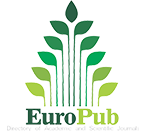Achieving sustainable development goals through ecological sanitation in the Philippines
Article ID: 8396
Vol 9, Issue 2, 2025
Vol 9, Issue 2, 2025
VIEWS - 3860 (Abstract)
Abstract
This study aims to assess the current state of toilet use in the Philippines as well as present the perspectives of ecological sanitation as a viable alternative to the use of conventional toilet in addressing the issue of environmental sustainability to contribute to the achievement of Sustainable Development Goal 6: Water and Sanitation for all by 2030. Four identified ecological sanitation projects were pilot tested in certain localities in the Philippines such as the Tingloy Island in Batangas City, the City of San Fernando, La Union, in Cagayan De Oro, Misamis Oriental, and in Mulanay, Quezon Province. The findings of the feasibility study showed that people would be willing out to try a new technology like the ecosan toilet if the perceive benefit like solutions to lack of water supply and improve agricultural productions dispels community hesitations. Moreover, this study concludes that ecological sanitation aligns with environmental sustainability objectives. It manages to address the urgent need for effective sanitation solutions in the face of rapid development and consumption.
Keywords
ecological sanitation; sustainable development; wastewater management; urban development; closing the loop
Full Text:
PDFReferences
- Andersson, E. (2015). Turning waste into value: using human urine to enrich soils for sustainable food production in Uganda. Journal of Cleaner Production, 96, 290–298. https://doi.org/10.1016/j.jclepro.2014.01.070
- Andersson, K., Rosemarin, A., Lamizana, B., et al. (2016). Sanitation, Wastewater Management and Sustainability: From Waste Disposal to Resource Recovery. UNEP/GPA and SEI.
- Del Castillo, Nicolo. (2006). Ecological Sanitation as Impetus for Sustainable Architecture. Presented at the 40th Annual Conference of Architectural Science Association ANZAScA. Available online: http://anzasca.net/wp-content/uploads/2014/08/ANZAScA2006_Nicolo-Del-Castillo.pdf (accessed on 2 June 2024).
- Dickin, S., Dagerskog, L., Jiménez, A., et al. (2018). Understanding sustained use of ecological sanitation in rural Burkina Faso. Science of The Total Environment, 613–614, 140–148. https://doi.org/10.1016/j.scitotenv.2017.08.251
- Esrey, Steven A., Andersson, Ingvar, et al. (2001). Closing the Loop: Ecological Sanitation for Food Security. Available online: http://www.energyandenvironment.undp.org/undp/indexAction.cfm?module=Library&action=GetFile&DocumentAttachmentID=1044 (accessed on 2 June 2024).
- Fruh, C. (2003). "Ecological Sanitation - An Introduction to the Philippines" General Paper prepared within the DILG-GTZ Water Program towards an Integrated Water Resources Management for the Philippines. Available online: https://waterfund.go.ke/watersource/Downloads/012.%20ecosan-introduction-phillipines.pdf. Accessed on 15 January 2024.
- Haq, G., & Cambridge, H. (2012). Exploiting the co-benefits of ecological sanitation. Current Opinion in Environmental Sustainability, 4(4), 431–435. https://doi.org/10.1016/j.cosust.2012.09.002
- Holmer, R., Factura III, H., Elorde, E., et al. (2009). Case Study of Sustainable Sanitation Projects UDD Toilets with Reuse in Allotment Gardens Cagayan de Oro, Philippines. Sustainable Sanitation Alliance. https://www.susana.org/knowledge-hub/resources?id=47#
- Holmer, Robert and Itchon, Gina. (2008). Reuse of Ecological Sanitation Products in Urban Argiculture: Experiences from the Philippines. Urban Agriculture Magazine, 20, 44-46.
- Ignacio, J. J., Alvin Malenab, R., Pausta, C. M., et al. (2018). Perceptions and Attitudes Toward Eco-Toilet Systems in Rural Areas: A Case Study in the Philippines. Sustainability, 10(2), 521. https://doi.org/10.3390/su10020521
- Ignacio, Jerome, R. (2006). "A Comparative Benefit-Cost and Cost-Effectiveness Analysis of Ecosan and Non-Ecosan Systems in San Fernando City, La Union". Foundation for a Sustainable Society, Inc.
- Jönsson, H., Vinneräs, B. (2004). Adapting the nutrient content of urine and faeces in different countries using FAO and Swedish data. In: Werner, C., Avendan˜o, V., Demsat, S., et al. (editors). bEcosan—closing the loopQ, Proceedings of the 2nd International Symposium on ecological sanitation; 07–11 April 2003; Lu¨beck, Germany. pp. 623–626.
- Kolesinskas, I. (2016). "Developing An Ecological Sanitation Transect". Available online: https://scholarworks.umass.edu/masters_theses_2/327 (accessed on 2 June 2024).
- Langergraber, G., & Muellegger, E. (2005). Ecological Sanitation—a way to solve global sanitation problems? Environment International, 31(3), 433–444. https://doi.org/10.1016/j.envint.2004.08.006
- Morgan, P. (2004). An Ecological Approach to Sanitation in Africa: A Compilation of Experiences. Available online: http://www.ecosanres.org/pdf_files/PM_Report/Chapter_10_The_usefulness_of_urine_a.pdf (accessed on 2 June 2024).
- Nawab, B., Nyborg, I. L. P., Esser, K. B., et al. (2006). Cultural preferences in designing ecological sanitation systems in North West Frontier Province, Pakistan. Journal of Environmental Psychology, 26(3), 236–246. https://doi.org/10.1016/j.jenvp.2006.07.005
- Richert, A., Gensch, R., Jönsson, H., et al. (2012). Practical Guidance on the Use of Urine in Crop Production. SEI, EcoSanRes series: 2010-1.
- Simha, P., Lalander, C., Vinnerås, B., et al. (2017). Farmer attitudes and perceptions to the re–use of fertiliser products from resource–oriented sanitation systems – The case of Vellore, South India. Science of The Total Environment. pp. 581–582, 885–896. https://doi.org/10.1016/j.scitotenv.2017.01.044
- Social Weather Station. (2020). Fourth Quarter 2019 Social Weather Survey Special Report: 90% of Filipinos households have their own toilets. Available online: https://www.facebook.com/share/p/2hhSKqvVMx9z8vmi/ Accessed on 12 February 2024.
- Tacio, H. (2015). Introducing: Sanitary Waterless Toilet. Available online: https://edgedavao.net/science/2014/09/a-sanitary-waterless-toilet/ Accessed on 15 November 2023.
- Tilley, Elizabeth, Lukas, U., et al. (2004). Compendium of sanitation systems and technologies. Dübendorf: Eawag.
- UNICEF and WHO. (2015). Progress on Sanitation and Drinking Water: 2015 Update and MDG Assessment. UNICEF and World Health Organization.
- Wegelin-Schuringa, Madeleen. (2000). Public Awareness and Mobilisation for Ecosanitation. IRC International Water and Sanitation Centre.
- Werner, C., Panesar, A., Rüd, S. B., et al. (2009). Ecological sanitation: Principles, technologies and project examples for sustainable wastewater and excreta management. Desalination, 248(1–3), 392–401. https://doi.org/10.1016/j.desal.2008.05.080
- Winblad, U., Simpson-Hebert, M., Calvert, P. (2004). Ecological Sanitation, revised and enlarged edition. Stockholm: Stockholm Environment Institute.
DOI: https://doi.org/10.24294/jipd8396
Refbacks
- There are currently no refbacks.
Copyright (c) 2025 Author(s)
License URL: https://creativecommons.org/licenses/by/4.0/

This site is licensed under a Creative Commons Attribution 4.0 International License.







